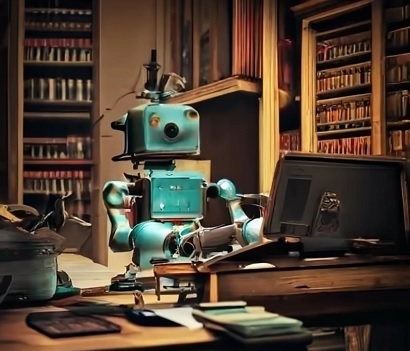Latest
From Dreams to Reality: A Journey Through the History of Artificial Intelligence
Introduction: The history of Artificial Intelligence (AI) is a captivating narrative that spans decades of innovation, setbacks, and breakthroughs. What began as an ambitious dream in the realms of science fiction has transformed into a powerful and ever-evolving field, influencing various aspects of our daily lives. 1. Dartmouth Conference and the Birth of AI (1956): The official birth of AI can be traced back to the Dartmouth Conference in 1956. Coined by John McCarthy, Marvin Minsky, Nathaniel Rochester, and Claude Shannon, the term "Artificial Intelligence" marked the beginning of a collaborative effort to explore machine intelligence and its potential applications. 2. Early AI Concepts (1950s-1960s): During the 1950s and 1960s, AI pioneers laid the groundwork for the field. Alan Turing's seminal work on computing and the Turing Test, which evaluates a machine's ability to exhibit human-like intelligence, set the stage for AI research. Early projects like the Logic Theorist and General Problem Solver demonstrated the feasibility of automated problem-solving. 3. Symbolic AI and Expert Systems (1960s-1970s): Symbolic AI, also known as "Good Old-Fashioned AI" (GOFAI), dominated the landscape during the 1960s and 1970s. Researchers focused on symbolic representations and rule-based systems to mimic human cognition. Expert systems, designed to emulate human expertise in specific domains, gained prominence during this period. 4. AI Winter (1970s-1980s): Despite early enthusiasm, the AI field faced a period of stagnation known as "AI Winter" during the late 1970s and 1980s. Unmet expectations, funding cuts, and the realization of the complexity of AI problems led to a decline in interest and investment in the field. 5. Renaissance of Machine Learning (1980s-1990s): The late 1980s and 1990s marked a resurgence in AI research, fueled by advancements in machine learning. Neural networks, inspired by the human brain's structure, gained attention. The development of algorithms such as backpropagation for training neural networks and the introduction of probabilistic reasoning techniques rejuvenated the field. 6. Rise of Expert Systems and Rule-Based AI (1980s-1990s): Expert systems experienced a resurgence, and rule-based AI found applications in various industries. Systems like MYCIN, designed for medical diagnosis, showcased the potential of AI in specialized domains. 7. Big Data and Machine Learning Revolution (2000s-2010s): The 21st century witnessed a transformative phase for AI, driven by the proliferation of big data and computing power. Machine learning algorithms, particularly deep learning, gained prominence. Breakthroughs in natural language processing, computer vision, and reinforcement learning paved the way for AI applications in areas such as image recognition, language translation, and autonomous vehicles. 8. AI in the Present (2020s): As of the 2020s, AI has become deeply integrated into everyday life. Virtual assistants, recommendation systems, and AI-driven technologies power industries ranging from healthcare to finance. Ethical considerations, bias in algorithms, and responsible AI practices have become central to discussions surrounding AI development and deployment. Conclusion: The history of AI is a testament to human ingenuity and perseverance. From the visionary beginnings at the Dartmouth Conference to the contemporary era of machine learning and deep neural networks, the journey of AI reflects a continuous quest to unravel the mysteries of intelligence and augment human capabilities. As AI continues to shape the future, the challenges and opportunities it presents underscore the need for responsible and ethical development in this dynamic field.


























Facebook Comments